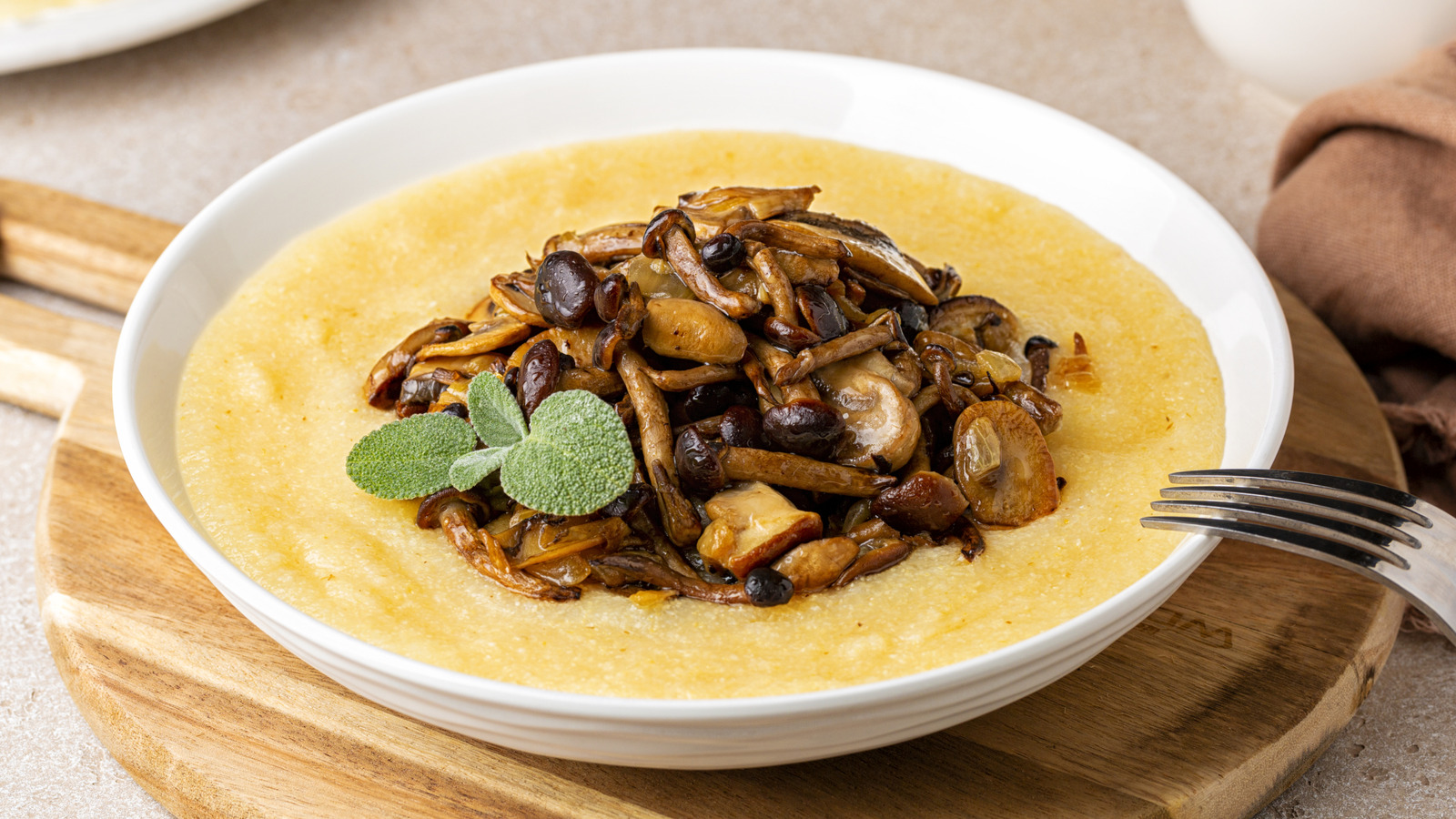
"According to Sarah Grueneberg, Chef and Owner of Chicago's Monteverde restaurant, the key to nailing the texture of this quintessentially Northern Italian dish is in the first 5 minutes of preparation. In that short amount of time, constant stirring is what rehydrates the cornmeal and suspends it in the liquid - making it much less likely to clump or scold. "If you spend these 5 mins whisking and stirring, it'll simmer and not stick," the expert chef and author of the cookbook, " Listen to Your Vegetables," told Tasting Table. "Otherwise, it will only sink and burn," she added."
"A simple homemade polenta recipe involves adding dried cornmeal to a pot of boiling liquid, before simmering down the starchy mixture to creamy perfection. Some variations also involve sautéing shallots and garlic in butter before simmering, and upgrading it with ingredients like butter, milk, spices, or Parmesan cheese. Either way, the process of stirring constantly - especially at the beginning - is essential to facilitate the hydration and gelatinization of the starch. If you don't stir constantly in the first 5 minutes like Grueneberg said, the granules of cornmeal could very well stick, sink, or burn - making for an unpleasantly grainy or lumpy texture and scorched corn taste."
"When making creamy polenta from scratch, some people put cornmeal in a food processor to make finer starchy granules that cook quicker. To each their own, but while you certainly don't want lumps of improperly gelatinized starch, the coarse texture of cornmeal amidst the creamy porridge isn't a bad thing."
Constant stirring during the first five minutes hydrates cornmeal and suspends granules, preventing clumping, sticking, and burning. Polenta is made by adding dried cornmeal to boiling liquid and simmering until the starchy mixture becomes creamy. Variations include sautéing shallots and garlic in butter and enriching with butter, milk, spices, or Parmesan. Stirring promotes starch hydration and gelatinization, which creates a smooth texture. Using overly fine cornmeal is unnecessary; a coarse texture can be desirable, and pulsing cornmeal in a blender is not recommended.
Read at Tasting Table
Unable to calculate read time
Collection
[
|
...
]